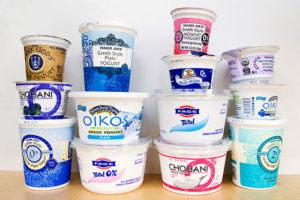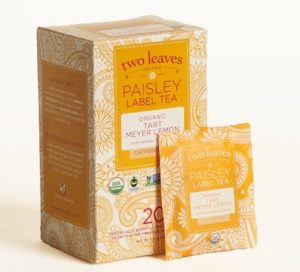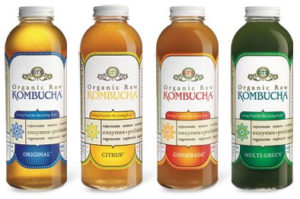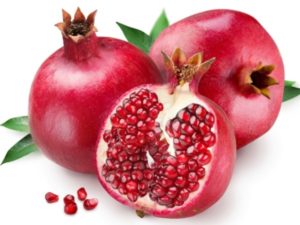 The slow economic recovery in the United States may be prompting consumer’s heightened interest in extreme flavour pallets — specifically a trend toward foods and beverages classified as sour and tart, says one culinary trend forecaster.
The slow economic recovery in the United States may be prompting consumer’s heightened interest in extreme flavour pallets — specifically a trend toward foods and beverages classified as sour and tart, says one culinary trend forecaster.
Suzy Badaracco of Culinary Tides in Portland says, she’s repeatedly watched more adventurous flavours in the food and beverage industry become a sign of a recovering economy — just as the fashion industry turns to more adventurous style, and “staycations” turn into more adventurous trip plans within the travel industry.
“During a recession, the palate goes flat, and people turn to macaroni and cheese, meatloaf and vanilla,” Badaracco commented. “But in recovery, that reverses, and we see more of anything that’s extreme on the palate, from heat to sours and the bitters that are becoming to popular in the bar scene with cocktails.”
This round of economic recovery has recently included some big citrus and spicy flavours, according to Badaracco, but one of the most noteworthy trends in food and beverage is a turn toward sour and tart flavours that continues into 2015.
 Already, this trend has reached into multiple venues of the food and beverage industry, from the boom in Greek yogurt in the dairy aisle, to newly developed sour beers and ciders at microbrews nationwide in the U.S.
Already, this trend has reached into multiple venues of the food and beverage industry, from the boom in Greek yogurt in the dairy aisle, to newly developed sour beers and ciders at microbrews nationwide in the U.S.
Fermented foods that were once seen as far from consumer-friendly, like kombucha tea and kimchi — a traditional Korean dish of pickled cabbage — are now becoming mainstays at health food stores.
Badaracco points to a number of reasons why these flavours are rising to the top of consumer curiosity lately, and her explanation is like a culinary spiderweb.
“Each of these foods has its own trajectory, and a different life cycle, but they share the commonality of extremes on the palate,” she said. “Sour beers have their roots in the Nordic cuisine that’s becoming so popular right now as its own trend. The probiotic bacteria included in kombucha has ties to a current health trend, as does Greek yogurt, and the fact that it invokes a healthy Mediterranean diet. But Greek yogurt has also been tied to the economic recovery, and the fact that people are more interested in food from around the world.”
The same goes for kimchi, as Badaracco notes that Asian flavours in the United States are no longer limited to Chinese, Japanese and Thai, and that consumers are now more willing to explore foods from The Philippines, Nepal and Korea.
 Richard Rosenfeld, owner of Two Leaves and a Bud Tea Company in Basalt, says his company’s new “Paisley Tarts” teas are accessible to people who want to dip a toe into the sour/tart trend, and experience a more flavourful range of herbal tea. He notes that within the tea industry, tart teas have long taken the form of hibiscus tea, such as Republic of Tea’s line of hibiscus teas, marketed as “sweet-tart”, healthful beverages.
Richard Rosenfeld, owner of Two Leaves and a Bud Tea Company in Basalt, says his company’s new “Paisley Tarts” teas are accessible to people who want to dip a toe into the sour/tart trend, and experience a more flavourful range of herbal tea. He notes that within the tea industry, tart teas have long taken the form of hibiscus tea, such as Republic of Tea’s line of hibiscus teas, marketed as “sweet-tart”, healthful beverages.
“We quickly realized that our Paisley Tarts are part of this trend that focuses on bigger, bolder flavours, tea drinkers are interested in taking part in this,” noted Rosenfield. “Tea is often seen as comforting, but has every potential to become a leader in the industry when it comes to exploring new flavours.”
Culinary branding expert Kazia Jankowski, based in Denver, gives similar reasoning for the current flavor trend.
“Tart/sour foods are perceived to have less sugar,” she says. “Some are also considered to have digestive benefits. These benefits play into the widespread consumer desire to reduce sugar and improve digestive health. Additionally, the tart flavors are new and interesting. Increasingly, when I moderate focus groups, I hear consumers crave sweet tart flavours, especially in their snacks. This plays on a consumer need for adventure and an exploration, especially global exploration, in their foods.”
 Jankowski backs this up with the numbers — according to SPINS, an information resource for the natural and specialty products industry, kombucha sales were up 29 percent between February of 2013 and February of 2014. Today, more than a one-third of a grocery’s stores yogurt section is Greek yogurt, she adds, and more than half of US households have purchased it. Finally, she notes that Kimchi is on one in 50 menus in the US (including restaurants like California Pizza Kitchen and TGI Fridays.)
Jankowski backs this up with the numbers — according to SPINS, an information resource for the natural and specialty products industry, kombucha sales were up 29 percent between February of 2013 and February of 2014. Today, more than a one-third of a grocery’s stores yogurt section is Greek yogurt, she adds, and more than half of US households have purchased it. Finally, she notes that Kimchi is on one in 50 menus in the US (including restaurants like California Pizza Kitchen and TGI Fridays.)
Christine Couvelier of Culinary Concierge in Victoria, British Columbia, shares the slippery art of predicting the next big food and beverage trend, and says sour and tart flavours are on her list of Top 10 Food Trends for 2015.
“It’s an interesting time to be part of the food industry,” said Couvelier. “We know more about food than ever before, and so do consumers. These consumers are hungry for new trends and flavours, and want to say to their friends, ‘Guess what I tasted?’”
 She encourages her business clientele to take advantage of food trends that are somewhere between “emerging” and “developing” trends that have staying power, such as the popular rise of the once-exotic pomegranate fruit within the past five years, or even balsamic vinegar, which was once relatively unknown and is now considered a kitchen staple.
She encourages her business clientele to take advantage of food trends that are somewhere between “emerging” and “developing” trends that have staying power, such as the popular rise of the once-exotic pomegranate fruit within the past five years, or even balsamic vinegar, which was once relatively unknown and is now considered a kitchen staple.
“Sour and tart flavors and foods have the potential to become a great money-making and tasting trend, because these are not flavours that are completely foreign to people,” she says. “That makes product development exciting.”
By Naomi Havlen
(N Havlen is a Copy Editor at Two Leaves and a Bud Tea Company)

You must be logged in to post a comment Login